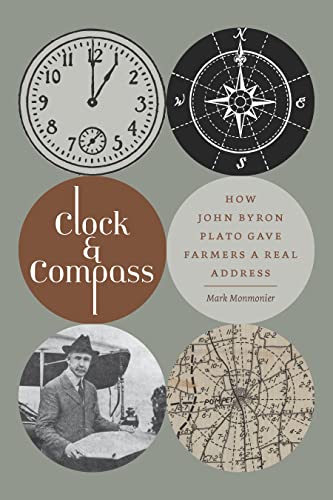
约翰·拜伦·柏拉图(John Byron Plato)是一个渴望成为农民的城市人,在上高中之前,他在康奈尔大学(Cornell)上了一门为期三个月的冬季农业课程。高中毕业前一年,他离开康奈尔大学,参加了美西战争。他是一名绘图员,经营一家贴面业务,为马拉运货车申请专利并制造停车制动器,在学校教书,还经营一个木材场。30岁出头时,他在科罗拉多州丹佛以北购买了一些农田,并开始饲养根西岛的牛,他在当地报纸上登广告出售这些牛。当一个有兴趣的买家急于看到他的小牛,却找不到他的农场时,柏拉图意识到,RFD的邮政地址只适用于投递邮件。
从柏拉图的商业中心到当地居民的地址是一个真实的方向。他为自己的发明“时钟系统”申请了专利,并试图将其出售给邮局。接下来是一个关于农村农业衰落、技术和资本主义取代约翰·拜伦·柏拉图(John Byron Plato)在地理上永垂不朽的故事。
Clock and Compass: How John Byron Plato Gave Farmers a Real Address
A city guy who aspired to be a farmer, John Byron Plato took a three-month winter course in agriculture at Cornell before starting high school, which he left a year before graduation to fight in the Spanish-American War. He worked as a draftsman, ran a veneers business, patented and manufactured a parking brake for horse-drawn delivery wagons, taught school, and ran a lumber yard. In his early thirties he bought some farmland north of Denver, Colorado, and began raising Guernsey cattle, which he advertised for sale in the local paper. When an interested buyer eager to see his calves couldn’t find his farm, Plato realized that an RFD postal address was only good for delivering mail.
Plato’s solution was a map-and-directory combo that used direction and distance from a local business center to give farmers a real address, just like city dwellers. He patented his invention called the “Clock System” and tried to sell it to the Post Office Department. What follows is a tale of persistence and failure as rural farming declined and technology and capitalism overtook John Byron Plato’s chances at geographic immortality.
OR



![通往奠边府之路:越南第一次战争的历史[有声读物]](https://www.yousuxue.com/wp-content/themes/riplus/timthumb.php?src=https://sanet.pics/storage-8/0422/S3B254QBvhEKL0mYE24PTapa0Y6iQOU3.jpg&h=200&w=300&zc=1&a=c&q=100&s=1)
